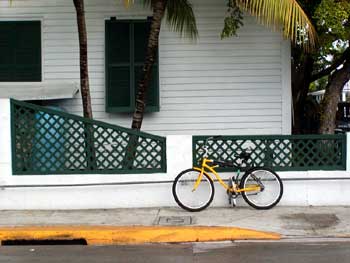History of the “Slim Beauty” Knot

A lot has been written about the Slim Beauty knot in the past decade. Fortunately we were around when lower Florida Keys fly fishing guide Simon Becker authored the knot in 1993 to answer the problem of having to tie hundreds of bimini twists in the course of a season of tarpon fishing.
The Slim Beauty finds its origins in some of the inventive knot techniques developed by Captain Tom Pierce, a light-tackle guide in Key West, Florida, in the 1970s. Pierce wanted to improve upon the standard jam knots that were being used to connect Dacron to monofilament. He came up with idea of using a clinch knot behind a figure-eight knot, and later improved on this by replacing the clinch knot with a series of wraps with a finishing lock. Captain Becker improved on this system in the early 1990s and refined the knot to its current form for use in tarpon leaders. If you’d like to learn how to tie the Slim Beauty, you can use our video and step-by-step article called “Tying the Slim Beauty.” – Editor’s Note
I STARTED TYING the “Slim Beauty” in 1993 because my fingers were sore from tying the hundreds of Bimini Twists that it took to get through a season of tarpon guiding. More seriously, I wanted a strong, easy-to-tie, and less-visible connection between the class and bite tippets. I haven’t ever been terribly concerned about records or fishing IGFA legal (15-inch class, 12-inch bite tippet, etc.). I just want to use the setup that gets the most bites, and then gives the best chance to hook and land the fish.
The story behind the name is this:
There was this surly waitress at a local Cuban restaurant here in Key West, since closed for reasons you’ll soon understand, with some amusing ways. The food — nasty roast pork with black beans and rice (microwave thawed we eventually discovered) — really wasn’t worth the visit, but she kept us coming back for more. She had this wacky habit of stamping every patron passing through the door with a snappy nickname of sorts that stuck right through dinner. Heading for a table one night following a productive knot tying session I was dubbed “Slim Slick”, and my friend, you guessed it: “Slim Beauty.” A few weeks later our girl was featured on the cover of The Key West Citizen, our local mackerel wrapper, in cuffs, a cop’s hand on her head helping her into his car. She’d been selling drugs to undercover agents for a month. Crack hidden between two Styrofoam cups is what you’d have gotten if you ordered a double bucci (a strong Cuban espresso) with a wink!
The rig I’m using currently is 25 lb. Mason class tippet and 60 lb. Orvis Mirage bite tippet and butt section. I started using a single strand of tippet to tie the knot (instead of doubling it) when I went up to the 25 lb. Mason. Tied with a single strand the 25 lb. Mason breaks at around 23 lbs. on my low-tech scale. That’s just right for my needs: the tippet should break before the fly line, and it gives my anglers lots of leeway for setting the hook and pulling on fish as hard as they want to. My experience is that no matter what the breaking strength of the leader, most anglers will max out pulling around 10 lbs. of steady pressure. It’s the spikes in pressure on the hook set and during head-shaking jumps that we need the buffer for.
Added benefits of this system are more bites because of the inconspicuous knots and longer bite tippet — it’s no longer necessary to carry a “leader stretcher case”— and reduced stress on the fish. We can land and release the fish much faster because the leader can be grabbed earlier in the fight, as you don’t have to wait for the short foot-long bite tippet of an IGFA leader to come within an arm’s length of the boat.
As for some simple advice about tying the Slim Beauty, if you’re willing to go with a stiff, strong class tippet like Mason, use a single strand instead of doubling the class tippet, and use five total wraps of the class around the heavier tippet. That’s three wraps up away from the knot, and two wraps back towards it. Try Chap-Stick™ for knot lube — it’s great. Pull very hard to tighten (you might want to use gloves if you’re new to knot-tying). I sit down and tighten the knot over my legs as you can really torque it down.
I also use the Slim Beauty in permit and bonefish leaders, joining the class tippet to the knotted, tapered butt section with a fail-safe Bimini.











